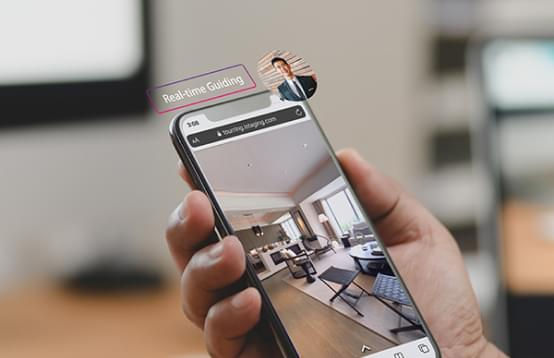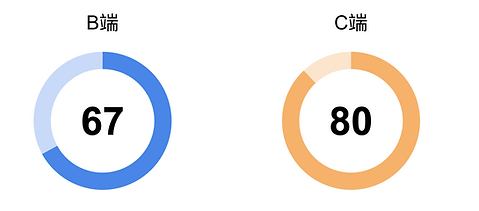
Exploring Insights and Opportunities in the Home Viewing Journey
This project explores pain points experienced by long-term home buyers during the house hunting process, and investigates how design can improve the efficiency and user experience of property viewing.
Why this topic? (Researcch Motivation)
👤 Home Buyers:
Buying a home is a long and stressful decision-making process. Many buyers said:
-
Repeated house tours are tiring, both physically and mentally
-
They spent a lot of time visiting houses that didn’t match expectations
-
Communication with agents was slow or off-target; house suggestions were often irrelevant
These issues make the house-hunting journey inefficient and reduce buyers’ confidence and trust.
🧑💼 Agents / Sellers:
For real estate agents, every tour is a chance to build trust and close a deal, but they face many challenges:
-
They often can’t get the buyer’s contact info, making follow-ups and future suggestions difficult
-
If the buyer dislikes the house during a tour, agents usually want to show other better-matching listings
-
But printed flyers are hard to carry, and phone files are messy — it’s hard to show extra houses on the spot
As a result, agents can’t react quickly or show the right homes in time, which affects service quality and conversion.
Research Methods
-
User Interviews: Interviewed 10 long-term home buyers
-
Persona Mapping: Identified 5 buyer types from interview data and 🎯 Focus Target Group

Among the five personas, Type 1 (Budget-Conscious Family), Type 2 (Space-First Buyer), and Type 4 (Remote Worker) are our key focus.Their needs align closely with the service concept—especially the need for efficient decision-making, fewer wasted visits, and remote viewing options (as highlighted in orange).
In contrast, Type 3 (Retiree Buyer) and Type 5 (Investor) are less likely to rely on remote house tours.
Retirees often prefer in-person visits due to lower tech familiarity and flexible post-retirement schedules.
Investors, on the other hand, value quick judgment on high-potential areas and don’t necessarily rely on house visits to make decisions.
-
Customer Journey Map (CJM): Visualized the buyer journey and emotional curve
-
Pain Point Mapping: Defined key pain points and possible solutions

Key Insights
-
1. Users often spend 6 months to 1 year house hunting, leading to mental fatigue
-
Mismatch between real property conditions and expectations wastes time
-
Lack of personalized communication from agents weakens engagement and trust
Valuable Takeaway
“Users don’t reject physical viewings—they just want better pre-screening and trust.”
So, my team and I discussed the pain points and possible solutions. We found that “Live House Tour” could bring real value to both buyers and agents. We decided to move forward with this idea and successfully convinced stakeholders that it’s worth building.
Our idea includes:
-
A live video call with the agent, plus full property details (like layout plans, 3D room views)
-
Helps buyers decide if it’s worth visiting before going out, saving time and energy
-
Agents can build trust and give better suggestions through the live interaction
-
Increases the chance of finding the right match and closing the deal

Design Arrangement

🎯 Purpose :
Simplify the login process by adding third-party options (Apple / Google), and clearly separate the flow between buyers and agents to improve first-time user experience.
Key Design Highlights
-
Clear Entry Points (Top Left Entry)
-
Users can choose to sign up with phone, Apple, or Google
-
Agents have a separate login path to highlight role difference
-
-
Post Login Info Completion
-
Ask for phone number and role after third-party login
-
Make sure account is linked correctly for future features like personalized recommendations and notifications
-
-
Agent Signup Flow (Bottom Left Area)
-
Clear step-by-step guide for agents to register
-
Collect agent info such as license number and service areas
-
-
Smooth Verification and Navigation
-
Clean flow for entering verification codes and animations
-
Helps users move through login without confusion
-

✳️ Remote Tour Highlights
-
Pre-call reminder: Countdown helps agents prepare.
-
Loading state: Smooth entry with panorama preload.
-
View control: Agent can lock or free buyer’s view; buyer’s gaze shown.
-
Drawing tool: Highlight issues directly on screen.
-
Layout switching: Show floor plans & switch rooms via backend.
-
Real-time suggestions: Recommend other listings if buyer isn’t interested.

Pre-launch Usability Test
Goal:
To understand how satisfied both buyers and agents are with using TourRing, including ease of use and service gaps. These findings will guide future improvements and help explore new directions to create more value.
Sample Size: 5 pairs
Participants: Each pair includes one buyer and one agent.
Test Setup:
Buyers and agents were asked to simulate a property tour as they normally would.


Key Insights from QUIS Satisfaction Results
1. Overall scores meet launch standards
Both B-side (agent) and C-side (buyer) users rated most aspects above the 5-point threshold, indicating that the product experience is solid and ready for rollout.
2. High ratings in usability and performance
“Ease of use” and “System performance” scored the highest across both groups (5.4–5.6), showing that the tool is intuitive and technically stable.
3. Slightly lower scores on interface presentation
“Interface design” received the lowest score (C-side: 4.5), suggesting room for improvement in layout clarity, visual hierarchy, or element spacing.
4. Messaging clarity could be improved
“Text clarity & information delivery” received just-passing scores (B-side: 4.8, C-side: 5.1), indicating that wording or guidance can be further simplified for quicker understanding.

Key Insights from NPS Score

-
B-side: Score 9
→ Agents are highly satisfied. They see clear value in the service and are likely to recommend it. It helps with their daily workflow.
-
C-side: Score 8.8
→ Buyers also gave a high score, showing a positive experience with the online tour. They’re willing to recommend it to others.
✅ Insight
High scores from both sides show strong potential for word-of-mouth promotion and future growth.
Key Insights from SUS Score

🔸 SUS Score Insights
-
B-side: Score 67
→ The score is a bit lower, which means agents are satisfied with the overall service but may face challenges in actual usage—like understanding the flow or interface.
-
C-side: Score 80
→ This is considered an “Excellent” score. Most buyers found the system easy to use and the experience smooth.
✅ Insight
-
The C-side design worked well and can be used as a reference for future design improvements.
-
The B-side needs further optimization, such as clearer instructions, helpful tips, or UI improvements to make it easier to use.
Key Pain Points to Address in the Next Iteration
Both B & C Users
-
Text and images are too small or can’t be zoomed in: Visual information is unclear, affecting user understanding and trust.
-
Uncertainty about what happens next: Users feel uneasy because they can’t predict the next step after clicking, which creates friction.
B-Side Pain Points (Agents)
-
Unfamiliarity with the e-flyer (digital property sheet): TourRing’s version differs from what agents are used to, requiring guidance and adaptation.
-
Incomplete property information: Missing notes or key highlights can lead agents to forget important details during a tour.
-
Learning curve: Even if the feature is seen as helpful, agents hesitate due to onboarding effort and a lack of clarity.
C-Side Pain Points (Buyers)
-
Anxiety around making the call: Buyers don’t know who will answer or what will happen, and are hesitant to share personal contact details upfront.
-
Lack of trust or psychological readiness: Buyers prefer to see agent profiles (e.g., gender, age) before initiating contact.
-
Unfamiliar with online processes: Especially for those more used to traditional home buying experiences.


-
Key Insights
-
Although agents and buyers have different perspectives, they both need clear process guidance, complete information, and psychological safety.
-
-
Future improvements should focus on:
-
Step-by-step guidance and visual onboarding
-
More visible and trustworthy agent/property details
-
Reducing first-contact anxiety (e.g., agent preview, anonymous entry options)
-